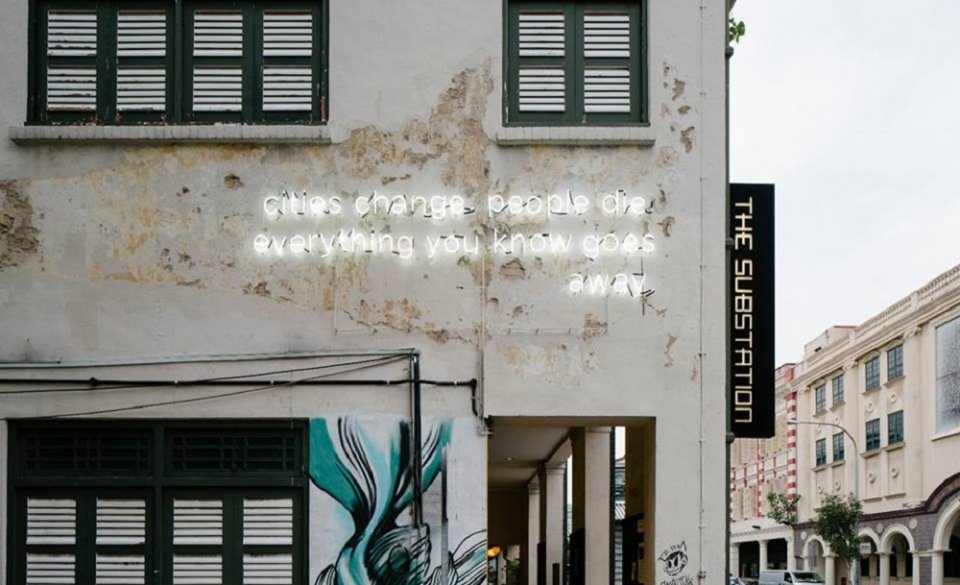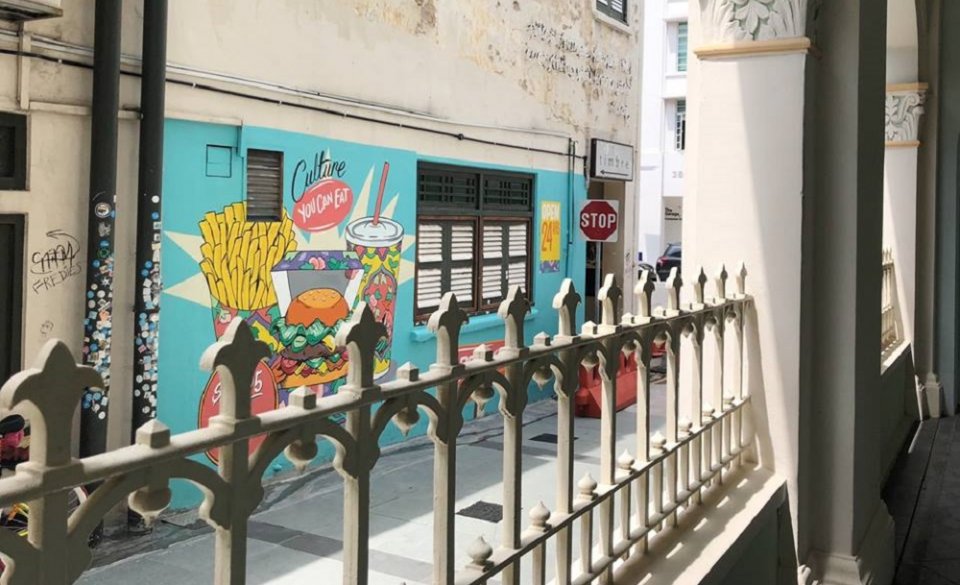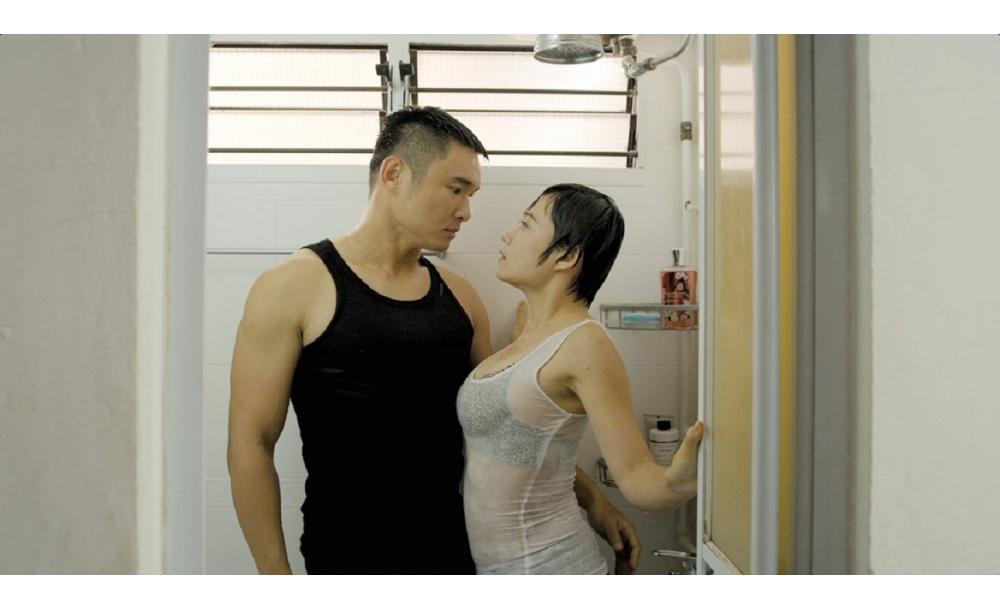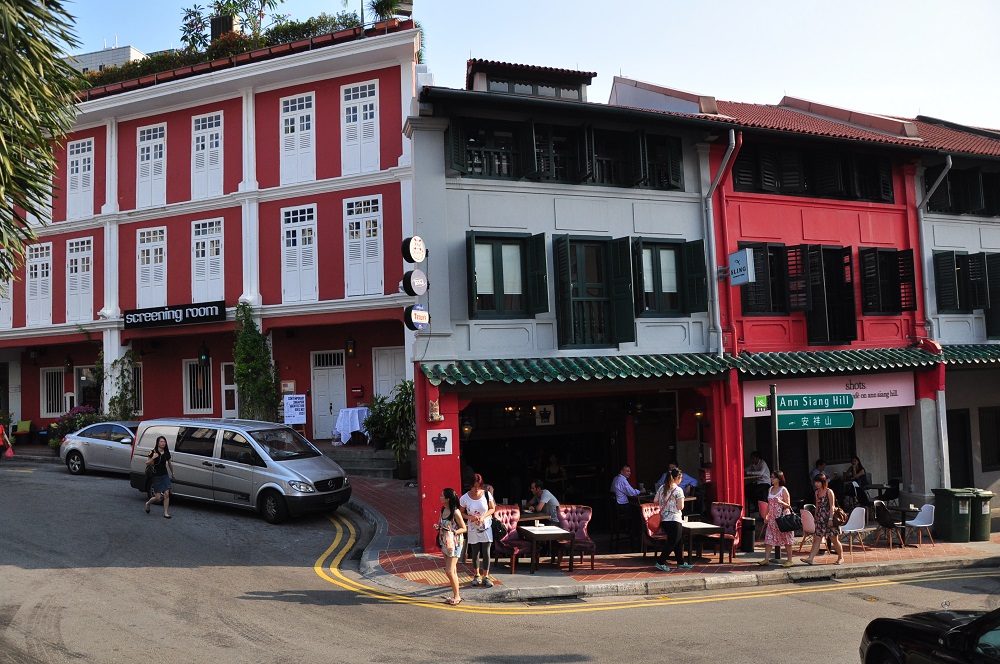Caught this year’s National Day Parade? Amid the visual spectacle of mass choreography, fireworks and Boo Junfeng-directed shorts, one thing stood out: the floats. More specifically, this year’s floating monstrosities were none other than the heritage playgrounds of our yesteryear—the mosaic-tiled dragon, dove and pelican that have become icons synonymous with the Singapore story.
Just a few weeks prior, the three floats had been sitting desolately, barred off from the public, in a secluded lot along Nicoll Highway. They eventually had their moment to shine, as star attractions in NDP 2018; but something about the DBS-sponsored floats didn’t feel right.
We weren’t the only ones who got queasy about it. On Aug 9 itself, local architectural photographer Darren Soh shared a series of three photos he took of the floats, pre-parade, voicing his concerns about their employment as heritage icons in the parade.
A post shared by Darren Soh (@darrensohphoto) on
Soh pointed out the hypocrisy of only valuing aspects of heritage when they’re under threat of disappearing; a tad too little, too late. The veteran photographer will be exhibiting photos of vanishing buildings in Singapore himself at Objectifs this month, with specific focus on iconic architecture like Pearl Bank Apartments, People’s Park Complex and Rochor Centre. Rochor Centre, as we’re all well aware, also came into the spotlight recently for its drawn-out demolition to make way for the North-South Corridor.
Is it true then—are we Singaporeans really just a walking cliché of “you don’t miss something until it’s gone”? And have we taken that obsession with disappearing things a little too far?
Along with vanishing buildings and playgrounds, an increased interest in all things “heritage” has sprung up over the years. Food festivals champion hawker food and tiffin carriers, museum exhibitions draw their visitors with “images of Singapore in the ‘50s to ‘80s”; companies produce endless lines of nostalgia-inspired gifts that draw from everyday objects no one thought to take note of in the past.
Many point to SG50 being a major stimulus—Meykrs founder Jonathan Hee only thought to create his bestselling ang ku kueh cushion when the nationwide campaign was first announced. “Everyone was feeling that patriotism somehow,” he said, adding that before 2015 you hardly saw locally-themed items in stores.
That same year, a site called “Simi Sai Also SG50” was created, poking fun at how independent and state merchants alike had been quick to jump on the bandwagon and slap a SG50 logo on their products—regardless of whether it was actually relevant to Singapore.
Did they actually care about the country’s 50 years of independence? Or was it an easy way to make a quick buck off a trend?
An upcoming exhibition at The Substation seeks to probe the conversation, examining our ideas and manipulation of the term “heritage” in recent times. Following the art space’s year-long theme of ‘Heritage’, the next installment looks specifically at conservation, with works and talks surrounding selective conservation and en bloc redevelopment. Artistic Director Alan Oei landed on the idea when it started to seem like heritage had become all-encompassing—where “everything around Singapore suddenly became heritage”.

The Substation
In looking at how the overuse of ‘heritage’ has become problematic, one problem that arises is when it reaches the extent that things become reduced to caricatures of their past selves. Oei pointed out certain architectural decisions in Singapore that have ended up looking too forced—and pointless. In the BTO estate of Bidadari, developers threw in a lake to recreate the former Alkaff Lake Gardens—even though that wasn’t its original position.
“There was a lake in the ‘40s where the locals used to hang out, but the thing is today nobody has any memory of it anymore—and yet the developers are like resurrecting this long-lost thing,” said Oei. “In that way it’s an interesting thing to think about, because heritage has become a stand-in for authenticity. You always keep going back to the past to find something real; and so that’s part of a much larger conversation about how we consume and see the world.
“This kind of very banal commodification of things—in some ways they become nothing more than pale shadows of themselves; they don’t even have any function except to be very decorative elements. Which is sad lor,” he shrugged.
You could say the same then for the heritage playgrounds—once proud institutions in their own right that brought communities together; now relegated to being backdrops for student dancers in our annual display of patriotism.
So who is to blame? It doesn’t fall squarely on one player, said Oei; brand-makers and developers may be complicit in the matter, but the roots stretch further back than just 2015’s Golden Jubilee fanfare.
“Nostalgia is a symptom of something else,” said Oei. “The commodification of our nostalgic elements is more of a symptom rather than a cause; it stands for something else—it’s a much bigger force than to say that these brand-makers are doing something terrible, because they’re just part of this larger spirit of the times.”
Heritage enthusiast Jerome Lim believes nostalgia tends to make people look back at things “with certain fondness, and through rose-tinted glasses” that overlook the more negative aspects and hardships of the past. “There is that sense of bitterness from the perspective of the things that we’ve lost over time,” said Lim. “Singapore has improved so much, we have made significant progress from what we were then; and what was necessary for this progress was to get rid of certain aspects of our way of life.” The 56-year-old history buff runs a heritage-centric blog and has been leading tours around heritage buildings for the last 10 years.
Ultimately though, the state must acknowledge its role and responsibility in the matter, said Oei. When museums and boards choose to highlight particular aspects of heritage and not others, they collectively create a body of knowledge that will then selectively define the future—for both Singaporeans and visitors, he added.
Right now, that body of knowledge comprises dragon playgrounds, Samsui women, coolies, and Peranakan culture, among other aspects.

An artwork by Tell Your Children on the side of The Substation facing the Peranakan Museum seeks to question the political and social ideologies behind the popularization of Peranakan culture in modern-day Singapore
“They simplify things in a way that isn’t fair or ethical,” said Oei.
By feeding into this nostalgia, we’re endorsing and encouraging the state to continue churning out the same carefully packaged bits of heritage it’s been offering us. They enable us, we enable them; it’s a never-ending destructive cycle.
So what can we as an all-consuming audience do? Oei suggests being more careful and deliberate about what we choose to celebrate as parts of our heritage; what we choose to preserve and conserve. “It has to be done not just from a top-down kind of angle where it’s the government or the museums deciding, but it has to be done in consultation with, and in particular sensitivity towards, the communities or the people who are descendants or practicing those kinds of heritage.”
One thing everyone can agree on is the need to move past just rigidly defining heritage from the perspective of buildings. The narrative must go beyond “conserving 6000 shophouses in Singapore”, said Lim, and onto recognizing the smaller cultural aspects that make up our heritage. The histories behind what we choose to celebrate, the lived experiences; the people.
At the end of his Instagram rant, Soh had but one ominous prediction to make: “Perhaps we will see Pearl Bank on a float in an upcoming NDP a couple of years down the road—by which time of course, it would be too late.”





